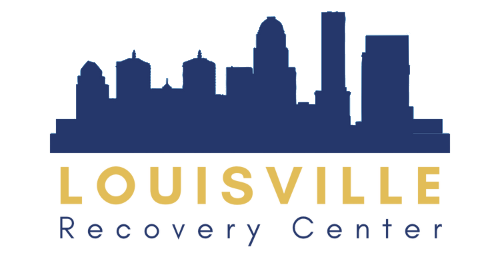Understanding Pink Cloud Syndrome in Your Recovery Journey
The term Pink Cloud Syndrome is often used by addiction recovery professionals to describe a state of euphoria and overconfidence that can occur early in sobriety or during the initial stages of recovery. It’s characterized by an unrealistic sense of optimism and an inability to accurately perceive the challenges ahead. While it may feel pleasant at first, it can be detrimental to long-term sobriety if not recognized and addressed appropriately.

What is Pink Cloud Syndrome?
The term “pink cloud” has been used in 12-step recovery programs for years, particularly Alcoholics Anonymous (AA), but the concept applies across the spectrum of addiction recovery. Pink cloud, more commonly referred to as Pink Cloud Syndrome, symbolizes a period during recovery where people feel on top of the world – experiencing a rush of feelings about their newfound freedom from addiction. The cloud is pink because it lacks substance and can easily dissipate.
Symptoms and Characteristics of Pink Cloud Syndrome
Pink Cloud Syndrome is not an officially recognized clinical diagnosis, but a descriptive term used to highlight the common phenomenon observed by people early in the recovery process. Pink Cloud Syndrome is widely acknowledged and discussed among the recovery community.
Some of the symptoms and characteristics associated with Pink Cloud Syndrome are:
- Euphoria: Individuals experiencing Pink Cloud Syndrome often feel a sense of elation and excitement about their newfound sobriety. They may believe that all their problems are solved now that they’ve stopped using substances.
- Overconfidence: There’s a tendency to underestimate the challenges of maintaining sobriety long-term. Pink Cloud Syndrome can lead individuals to believe they are immune to relapse or that they have everything under control.
- Denial of Reality: Those on the pink cloud may be in denial about the severity of their addiction or the work required for sustained recovery. They may gloss over past struggles and minimize the impact of their addictive behaviors.
- Disconnection from Support Systems: Due to the euphoria experienced, individuals may distance themselves from their support networks, thinking they no longer need help or guidance.
- Risk of Relapse: Perhaps the most significant danger of Pink Cloud Syndrome is its potential to set individuals up for relapse. When reality inevitably hits, and the initial excitement fades, they may find themselves unprepared to deal with life’s challenges without resorting to addictive substances.
Pink Cloud Causes and Triggers
After struggling with addiction, the early days of sobriety can bring immense relief. Before withdrawal symptoms start, the mind may feel clearer – creating a natural high. This high can be addictive as well. Although necessary in recovery, positive encouragement from peers, family, or therapists can contribute to this feeling and amplify the feelings of euphoria.
Some people turn to substances to cope with underlying emotional issues. When they stop using these substances, the surge of emotion can be overwhelming, and they may not be fully aware of the challenges ahead of them to maintain sobriety. Someone finding themselves on the pink cloud may underestimate the triggers, cravings, and emotional struggles that are ahead of them during recovery.

How to Manage Pink Cloud Syndrome
When entering an addiction treatment program, there are several topics that will be covered – including Pink Cloud Syndrome. The purpose of the program is to set the individual up for success with long-term sobriety, and the pink cloud can be a hiccup along the way. Therapists and addiction treatment center staff are well-versed in managing Pink Cloud Syndrome and may use the following to help navigate participants through the cloud:
- Education and Awareness: Education about the recovery process and the potential pitfalls, including Pink Cloud Syndrome, is crucial. Being aware of the phenomenon can help individuals recognize when they’re experiencing it and take appropriate action.
- Realistic Expectations: Encouraging individuals to set realistic expectations for their recovery journey is essential. Remind them that recovery is a process, and there will be both highs and lows along the way.
- Building a Strong Support System: Emphasize the importance of maintaining connections with supportive friends, family members, sponsors, or therapists. These individuals can provide valuable guidance and perspective, especially during challenging times.
- Mindfulness and Self-Care: Practicing mindfulness techniques and self-care activities can help individuals stay grounded and connected with their emotions. Encourage activities such as meditation, exercise, journaling, or spending time in nature.
- Seeking Professional Help: If Pink Cloud Syndrome persists or leads to risky behaviors, encourage individuals to seek additional professional help from therapists, counselors, or addiction specialists. These professionals can provide personalized support and strategies for managing the challenges of recovery.
Get Help with Pink Cloud Syndrome During Recovery
Pink Cloud Syndrome is a common experience for many individuals early in their recovery journey. While the initial feelings of euphoria may be enjoyable, it’s essential to recognize the potential pitfalls and take proactive steps to maintain long-term sobriety. By building a strong support system, setting realistic expectations, and practicing self-care, individuals can navigate through the pink cloud and emerge stronger and more resilient in their recovery journey. Ultimately, sobriety is a lifelong commitment that requires dedication, self-awareness, and ongoing effort to overcome the challenges and embrace the rewards of a substance-free life. Louisville Recovery Center is here to help you along the way, even when the pink cloud pops up. If you or a loved one is ready to lead a sober life, call us today and re-imagine addiction treatment.







